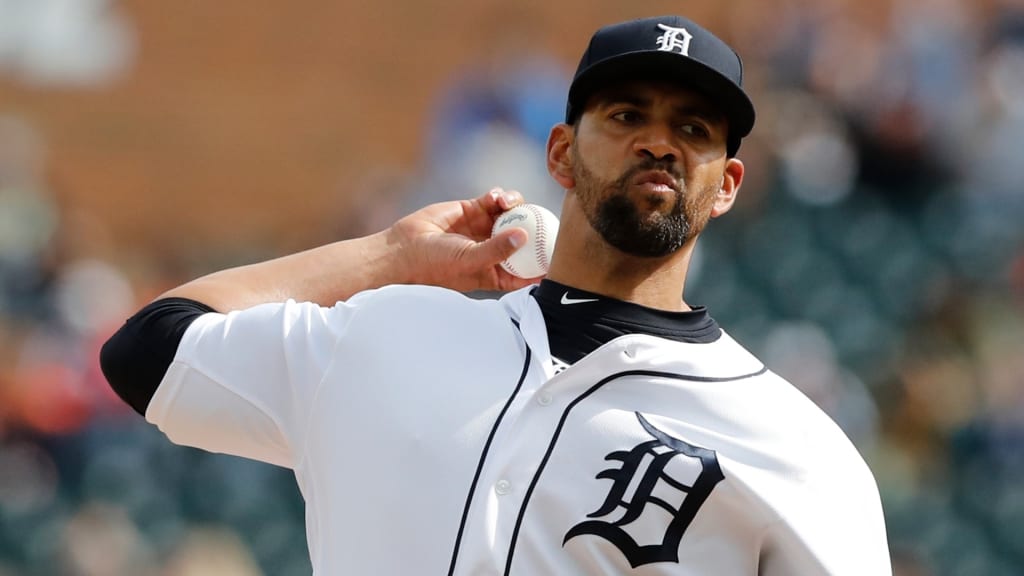
DETROIT – For all the medical and analytical studies put into Tommy John surgeries among pitchers, thoracic outlet syndrome remains one of the great unknowns in baseball. Former Tiger Jeremy Bonderman was never the same after having surgery for it a decade ago. Matt Harvey is still trying to find his old form. Mike Foltynewicz became an All-Star last year after undergoing surgery a couple of years prior.
That uncertainty had Tyson Ross worried when the ulnar nerve in his elbow began giving him trouble this month. He had thoracic outlet surgery in 2016.
“What I was feeling out there was aligned a lot with what they say TOS is in the first place,” Ross said, “which weren’t my symptoms the first time around. I’d heard all the terms and ailments of TOS, and they were like to a 'T' with what I was experiencing out there.
“I didn’t know what it was, but I knew it wasn’t good. It was something I’d never really felt before out there.”
Ross talked with other pitchers who have had the surgery to compare symptoms. He traveled to St. Louis to check with Dr. Robert Thompson, who performed the surgery on him. Then he traveled from there to Dallas to see Dr. Greg Pearl, the other noted thoracic outlet specialist who had performed surgeries on Bonderman and former Tiger Kenny Rogers.
The diagnosis from both was that he isn’t experiencing a recurrence.
“Definitely good news from them,” Ross said. “Now it’s just a matter of letting the nerve calm down and continue with treatment and get back to a throwing program.”
That’s the tricky part. While his diagnosis is good, he still has to allow time for the symptoms to subside before throwing again. There’s no timetable for how long that might take.
“Luckily, this isn’t TOS right now. I’ve come back from that,” Ross said. “But nerves are just a lot different. If a tendon or a ligament has an injury, it’s clear-cut. There’s definite timelines. With nerves, it’s just a lot different. You have to let the thing calm down and they’re a little slower to heal.”
Until then, he’s trying to keep himself in shape from a cardiovascular standpoint and maintain muscular strength. Once he can throw again, he wants the ramp-up to be quick.
“Really, it’s just trying to stay as close to ready as possible before I can start throwing again,” he said.
No rehab assignment yet for Mercer
Jordy Mercer continues to take ground balls and batting practice, but lingering soreness in his strained right quad is holding the shortstop back from beginning a Minor League rehab assignment. Since he’s on the injured list for the injury for a second time this year, the Tigers want him to be symptom-free -- soreness and all -- before he plays again.
The Tigers can afford to be patient with Mercer while Ronny Rodriguez continues to hit well. Rodriguez has been getting the bulk of the starts at shortstop. Though his defense (zero Defensive Runs Saved) has graded out better than Mercer (minus-2) in similar innings, Mercer is seen as the stronger, more experienced defender who manager Ron Gardenhire believes can stabilize Detroit’s entire infield upon return.
Zimmermann continues rehab
The Tigers held back Jordan Zimmermann (flexor pronator sprain) from throwing on Sunday after back-to-back days of long-tossing on the field. Zimmermann, however, still wanted to get on the field and work. So while pitchers threw on the field Sunday morning, Zimmermann grabbed his glove and took ground balls in the infield from coach Ramon Santiago. He then moved to first base and caught throws from Mercer.
Gardenhire said Thursday that Zimmermann is at least a month away from returning to pitching. Zimmermann, for his part, has avoided a firm timetable, saying his progression will be based on how his arm feels.
Boyd teams up with Taylor Hooton Foundation
Matthew Boyd put a ton of work into shaping his body and his game last offseason, from training to pitch work to sleep and diet routines. So when the Taylor Hooton Foundation needed a Tiger to replace James McCann as the team’s representative on the foundation’s advisory board, Boyd was a logical fit.
The foundation is among the leaders in the advocacy against the use of performance-enhancing substances by youth in America. Since 2015, it has placed team representatives on an advisory board to participate in its public-service campaign, known as “All Me,” to educate youth about the dangers of anabolic steroids and other performance-enhancing substances.
“I think bringing awareness to playing the game fairly as well as taking care of your body the right way is a good thing,” Boyd said. “The integrity of the game is held through that, and it benefits people’s lives to do things the right way, not to take shortcuts. I like what they stand for, and I think it’s a pretty good cause.”

Boyd has become a good example of the values of clean training. By changing his diet and workouts and working with a nutritionist, he has enjoyed a breakout start, becoming the ace of the Tigers' rotation and a potential All-Star candidate. The work required long offseason days from the left-hander, but he’s reaping the benefits.
“It’s not easy,” Boyd said. “But if it’s easy, it’s probably not worth having. It’s about not taking the easy way out and doing everything the right way.”
Perez returns to injured list
Franklin Perez’s return to pitching lasted one start. The Tigers’ third-ranked prospect, and the 71st-ranked prospect in MLB Pipeline’s top 100, was placed back on the seven-day injured list at Class A Advanced Lakeland with a recurrence of right shoulder inflammation.
Perez, the prized prospect from Houston in the Justin Verlander trade, opened the season on the injured list with right shoulder tendinitis. After a cautious rehab process, the 21-year-old right-hander returned to action last week with four innings of one-run ball for the Flying Tigers, walking three and striking out three.
While Perez has shown flashes of dominant pitching when healthy, injuries continue to impede his progress. He pitched in just 19 1/3 innings over seven games last year between a season-opening lat strain and season-ending right shoulder inflammation. A right trapezius spasm limited his work in big league camp in Spring Training.
